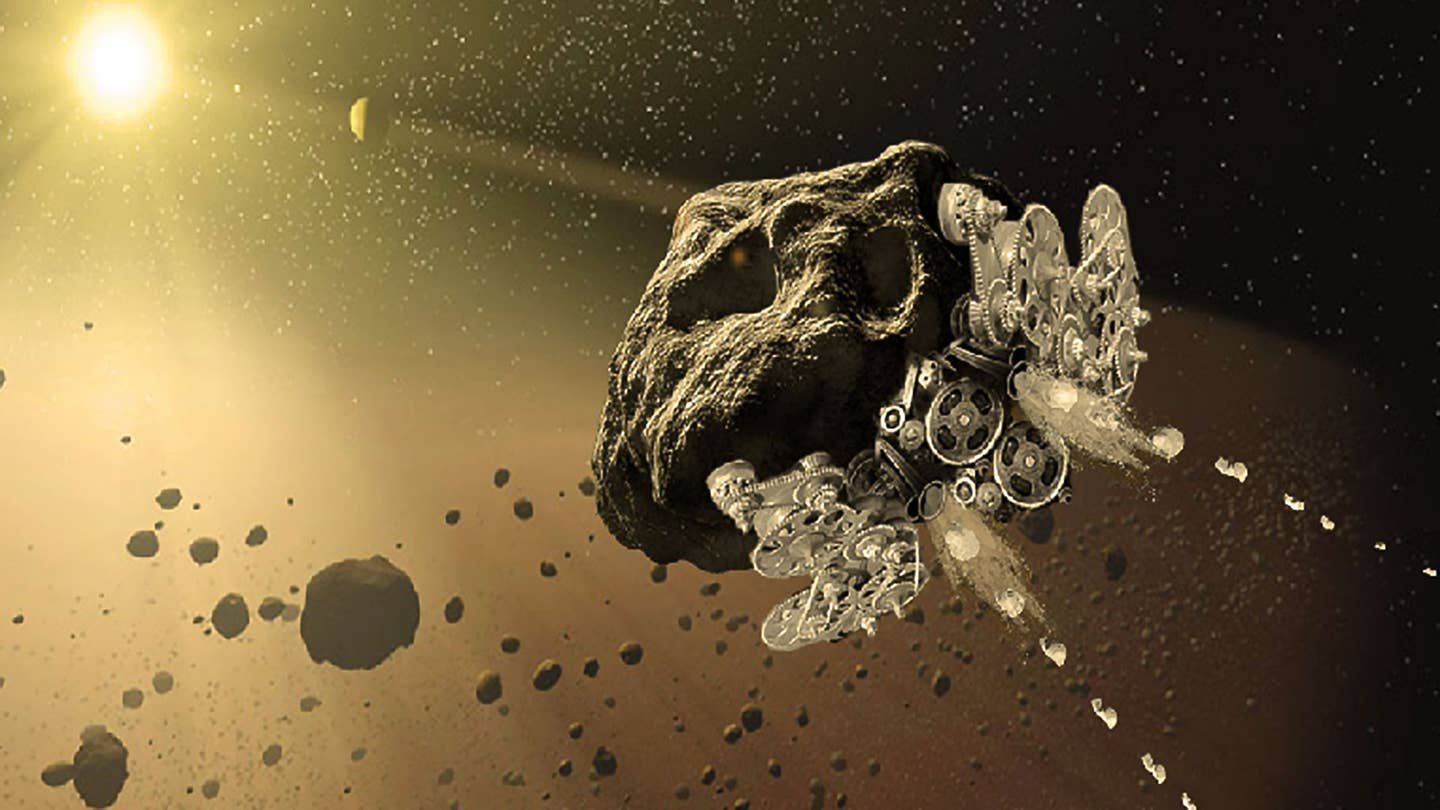NASA’s Project RAMA Would Use Asteroids to Play Asteroids
This technological moonshot and 13 others are deemed worthy of further study.

NASA likes to keep its moondust-sprinkled fingers in a number of public-private partnerships. The NASA Centennial Challenges dangle millions of dollars for independent groups who can solve conundrums of deep-space exploration. The 18-year-old NASA Innovative Advanced Concepts (NIAC) program does the same, but on a different timeline and with a wider remit. Looking for "concepts, anchored to sound science, but rich in 'what if' creativity, [that] will make our science, exploration and commercial space futures possible," the space agency just named the 13 Phase 1 selections that will each get roughly $100,000 to support nine months of further research.
The 13 chosen concepts aren’t just all over the map, they’re all over the cosmos. There’s a Venutian probe, an echo-imaging exoplanet cartographer, a system to use “synthetically enhanced microbes” for extraterrestrial electronics recycling, and a Nano Icy Moons Propellant Harvester – or just NIMPH to its friends.
Then there’s Project RAMA from Made in Space, a company NASA already knows well. The Reconstituting Asteroids into Mechanical Automata concept would turn an asteroid into an autonomous spaceship. That would be done by having “technically simple robotic processes” use material from the asteroid itself to 3D print (in this application it goes by the precocious name “additive manufacturing”) “very basic versions of spacecraft subsystems” like guidance, navigation and control, avionics, and propulsion that every interstellar traveler needs. Made in Space understands the gravity-free additive manufacturing part, since it developed the 3D printer on the International Space Station.
As for how they’d get robots to make spaceship electronics out of asteroid dust, well, that’s why they call these things concepts and why they get money for further study. But assuming they got it to work, Project RAMA is considered a way to use giant space rocks as projectiles one could hurl at other asteroids that threaten earth, as stepping-stone waypoints between Earth and the moon to make lunar missions easier, or as a way to pull asteroids into Earth orbit for study.
At the end of nine months NASA will examine the projects again and winnow them for potential passage to Phase 2. Those that make it will get up to $500,000 to conduct two more years of study. Even if Made in Space’s submission is chosen, they admit it will take much longer than that to get Project RAMA working, estimating a time frame of between 20 and 30 years. We hope they do it no matter how long it takes. The idea of little robots in space playing Atari’s Asteroids with actual asteroids is so cool even the other Rama would approve.
